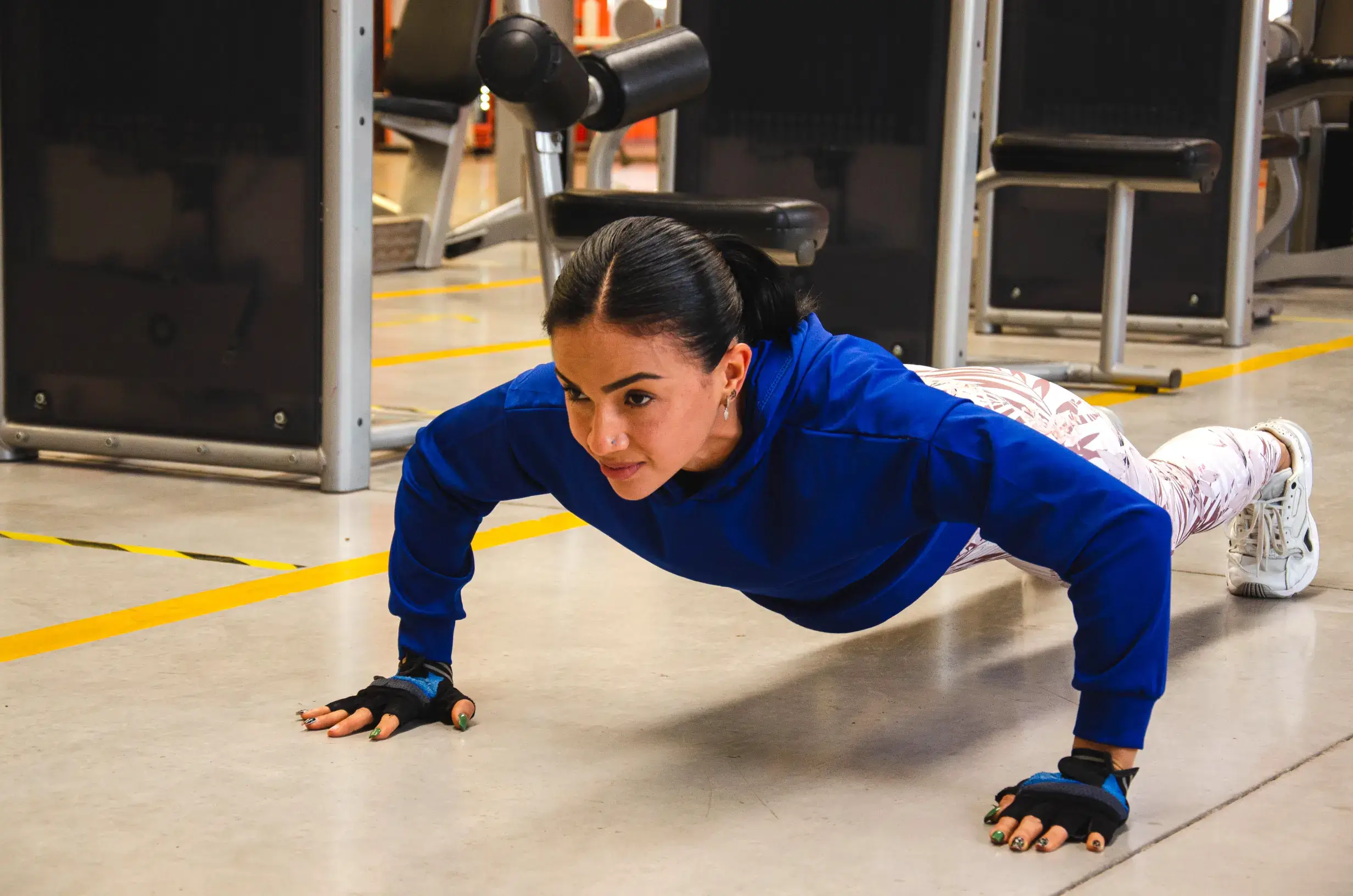
Breast Exercises for Women: Support and Shape Your Bust Naturally
Breast Exercises for Women: Support and Shape Your Bust Naturally
Breast exercises for women focus on strengthening the muscles around the chest, particularly the pectoral muscles, which lie beneath the breasts. These exercises help provide better support, enhance posture, and improve skin elasticity. While they don’t directly increase breast size, they can create a more lifted and toned appearance. Regular breast exercises for women can also help alleviate back or neck pain caused by poor posture, making them an essential part of a well-rounded fitness routine.
Additionally, during menopause, hormonal changes can lead to a decrease in skin elasticity, muscle tone, and even changes in breast size or shape. Incorporating breast exercises into your routine can help counteract these effects, providing much-needed strength and support to the upper body.
Here’s a detailed look at why these exercises matter, their benefits, and the most effective movements to naturally support and shape your bust.
Understanding Breast Anatomy
The breasts are composed of fatty tissue, glandular tissue, and ligaments, all of which are supported by the pectoral muscles. While genetics primarily determine breast size and shape, strengthening the underlying muscles can enhance their overall appearance.
Exercise plays a key role in toning and lifting the chest area, improving posture, and boosting circulation. This is especially important for women going through menopause, as decreasing estrogen levels can lead to a loss of skin firmness and muscle strength. Strength training through breast exercises for women helps maintain chest support and can reduce discomfort associated with hormonal fluctuations.
Why Breast Exercises for Women Matter: Strength, Support, and Long-Term Health
Beyond aesthetics,these exercises are essential for upper body strength, posture, and overall wellness. As women age, including during menopause, maintaining muscle tone in the chest and shoulders becomes even more critical.
- Reduces Discomfort: Strengthening chest muscles and improving posture can alleviate discomfort, especially for those experiencing hormonal fluctuations, breast tenderness, or heaviness in the chest.
- Supports Posture & Back Health: Weak chest and shoulder muscles contribute to poor posture, leading to back and neck pain. Strengthening these areas provides better spinal alignment and long-term relief.
- Maintains Breast Support & Firmness: During menopause, the decline in collagen and estrogen can lead to sagging. Targeted breast exercises for women help slow this process by maintaining muscle tone.
- Enhances Circulation & Skin Health: Strength training increases blood flow, which is beneficial for skin elasticity and overall breast tissue health.
- Encourages Body Awareness & Confidence: Incorporating strength-based movements into a routine helps women take proactive steps in maintaining their health, especially in a phase of life where bodily changes can feel out of their control.
It enables women to support their chest muscles, improve overall strength, and maintain confidence in their changing bodies.
Benefits of Breast Exercises for Women
These exercises not only strengthen the upper body but also provide functional benefits that improve daily movement and overall health:
- Improves Posture: Strengthening the upper chest, shoulders, and back encourages better alignment, reducing slouching and making the bust appear more lifted.
- Enhances Muscle Tone & Support: Pectoral muscles, which lie beneath the breast tissue, provide structure and support. Regular breast exercises for women firm and strengthen these muscles.
- Helps Counteract Sagging: Aging and hormonal shifts can weaken the ligaments that support the breasts. Strength training helps maintain muscle firmness, reducing the effects of gravity.
- Relieves Upper Body Discomfort: Strengthening the chest, shoulders, and upper back can reduce tension-related pain, especially for women with larger busts.
- Boosts Circulation & Skin Elasticity: Increased blood flow to the chest area supports healthy skin and tissue, promoting a youthful appearance.
Effective Breast Exercises for Women
Here are some of the most effective exercises to strengthen and tone the chest area:
1. Push-Ups
- Muscles Targeted: Chest, shoulders, triceps, core
- How to Do It: Start in a plank position, lower your body toward the ground, then push back up. Modify by using knee or wall push-ups.
- Benefits: Builds upper body strength and helps lift and firm the chest.
2. Chest Press
- Muscles Targeted: Pectorals, shoulders, triceps
- How to Do It: Lie on your back, hold dumbbells, press them up, then lower.
- Benefits: Strengthens and defines the chest muscles for better support.
3. Chest Fly
- Muscles Targeted: Pectorals, shoulders
- How to Do It: Lie on your back, extend arms with dumbbells, lower them outward, then bring them back together.
- Benefits: Improves muscle tone and enhances chest shape.
4. Plank to Push-Up
- Muscles Targeted: Chest, shoulders, arms, core
- How to Do It: Start in a forearm plank, push up to a full plank, then return.
- Benefits: Strengthens the upper body and improves posture.
5. Arm Circles
- Muscles Targeted: Shoulders, upper arms
- How to Do It: Extend arms out to the sides, make small circles, then reverse direction.
- Benefits: Tones the shoulders and improves upper body endurance.
6. Wall Push-Ups (Beginner-Friendly)
- Muscles Targeted: Chest, arms, shoulders, core
- How to Do It: Stand facing a wall, place hands shoulder-width apart, and perform push-ups against it.
- Benefits: Provides a low-impact way to strengthen chest muscles.
7. Bridge Pose
- Muscles Targeted: Glutes, lower back, pectorals, core
- How to Do It: Lie on your back, lift your hips toward the ceiling, then lower.
- Benefits: Engages the chest muscles while improving spinal support and flexibility.
Important Considerations
- Consistency is Key: Aim for 3-4 workouts per week for noticeable results.
- Start Slow & Progress Gradually: Use modified versions of exercises if needed, then increase intensity over time.
- Prioritize a Balanced Diet: Proper nutrition supports muscle recovery and overall skin health.
- Focus on Posture: Performing breast exercises for women with correct alignment ensures effectiveness and prevents strain.
Breast exercises for women are an effective way to naturally support and shape the bust while enhancing overall upper body strength and posture. As women age, particularly during menopause, muscle tone and skin elasticity decrease, making it even more important to strengthen the chest area. By consistently incorporating breast exercises for women like push-ups, chest presses, and arm circles into a routine, women can maintain firmness, improve posture, and reduce upper body discomfort.
A strong chest contributes not just to physical well-being but also to confidence and overall health. Start slow, stay consistent, and embrace the benefits of movement for a stronger, healthier body at any stage of life.
FAQs
Results vary depending on consistency and intensity, but with regular practice, you can expect to see noticeable improvements in muscle tone and posture within 4-6 weeks.
Yes, breast exercises for women can be especially helpful for those with larger busts. Strengthening the chest, back, and shoulder muscles improves posture and provides better support, which can help reduce strain on the back and shoulders. This can also minimize discomfort and improve overall upper body strength.
Breast exercises are generally safe, but menopause-related hormonal changes may lead to joint stiffness or bone density loss. It’s important to listen to your body, start slow, and focus on proper form to avoid strain or injury.
Exercises that focus on strengthening the chest, shoulders, and upper back, like push-ups, chest presses, and planks, can help improve posture and reduce discomfort. These areas tend to become weaker during menopause, so focusing on them is especially beneficial.
Yes, targeted breast exercises for women can help improve muscle balance and posture, which may create a more symmetrical appearance. While they won’t change the size of the breasts themselves, strengthening the underlying pectoral muscles can help enhance overall chest definition and support.

Sonakshi Kandhari





